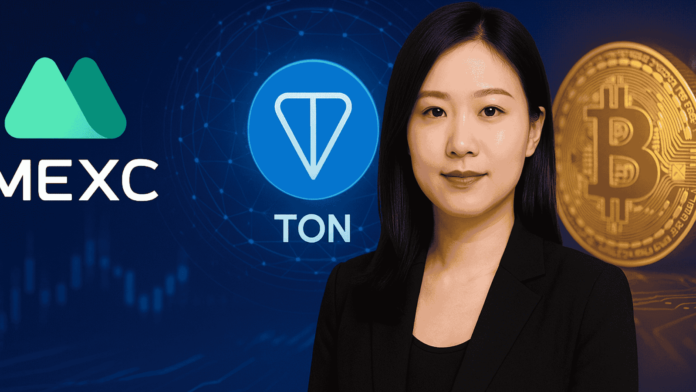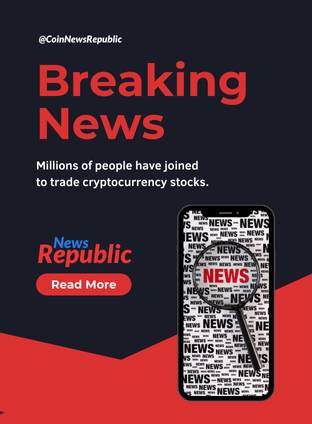With the cryptocurrency market evolving faster than ever in 2025, investors and platforms are shifting focus from hype cycles to sustained growth narratives. Tracy Jin, Global Strategy Lead at MEXC, one of the world’s top centralized exchanges, recently shared insights in an exclusive interview covering the future of crypto investment, the role of Asia in the next bull run, and why the TON blockchain is poised to be a major driver of global Web3 adoption.
The conversation reflects a notable pivot in sentiment across the industry: away from the dominance of speculative altcoins and toward infrastructure, ecosystem utility, and regionally led blockchain innovation.
Retail Investment Is Becoming More Sophisticated
According to Jin, the average crypto investor in 2025 is significantly more strategic than during previous market cycles. “We’re seeing more users using structured products, staking derivatives, and exploring cross-chain yield protocols,” she said. “Retail participants are approaching the market with greater caution and technical literacy.”
This trend aligns with data from MEXC’s internal user behavior reports, which indicate growing demand for low-volatility products such as dual investment instruments and automated yield farms. With AI tools making data analysis and strategy execution easier for individuals, retail users are no longer simply chasing meme tokens—they’re balancing risk and optimizing capital.
Jin attributes part of this change to broader financial education and improved user interfaces, but she also credits the rise of regional ecosystems that build local trust and cater to specific use cases.
Asia Is Leading the Web3 Infrastructure Surge
Jin emphasized Asia’s outsized role in the evolution of Web3. “Asia is not just participating in crypto anymore; it’s setting the pace,” she said. “From regulatory sandboxes in Singapore to Japan’s tokenization frameworks and South Korea’s stablecoin experiments, innovation is coming from all directions.”
MEXC, which has deep operational ties across the region, has doubled down on supporting native Layer-1 projects and infrastructure-focused startups emerging out of Vietnam, Indonesia, India, and Thailand.
She noted that users in Asia tend to adopt technology faster, particularly in mobile-first markets. This is one of the reasons why MEXC has actively supported Telegram-based blockchain platforms like TON, which are gaining ground in user onboarding and decentralized app (dApp) development.
The TON Blockchain Is Quietly Becoming a Force
When asked about emerging blockchains with real-world impact, Jin pointed directly to TON—the Open Network initially developed by Telegram. “TON is one of the most promising ecosystems we’ve seen this year,” she said. “Its deep integration with Telegram’s user base gives it a huge edge in distribution, UX, and social onboarding.”
TON recently surpassed 500 million wallet activations, largely due to Telegram’s mini-app framework and frictionless wallet integration. This allows developers to build dApps that feel native to users who have never interacted with blockchain before.
MEXC has listed several TON-native tokens in recent months, and Jin hinted that more integrations are on the way. “We’re not just supporting tokens—we’re building trading infrastructure, analytics dashboards, and even fiat gateways specifically for TON.”
From Infrastructure to Retail Accessibility
One of the key themes Jin emphasized was the importance of user accessibility. In her view, the most successful projects going forward will not necessarily be the most technically complex, but the ones that create seamless, rewarding user experiences.
This is where TON’s design philosophy stands out. “You don’t need MetaMask; you don’t need to understand gas fees; you don’t even need a browser extension,” she said. “You just need a Telegram account. That’s revolutionary in terms of onboarding.”
She believes this model will inspire similar integrations in other messaging and social platforms, further blurring the line between Web2 and Web3.
Looking Ahead: Compliance, Liquidity, and Cross-Chain Expansion
Jin also acknowledged that success in the next crypto cycle will be defined by compliance readiness and interoperability. With MiCA now active in Europe and U.S. regulators pursuing clearer frameworks, exchanges like MEXC are investing heavily in internal risk controls, transparency protocols, and cross-border licensing.
“We want to be ahead of the regulatory curve,” she said. “But more importantly, we want to be part of shaping policies that protect users without stifling innovation.”
As for cross-chain liquidity, Jin sees a future where most users won’t even know which chain they’re on. Protocols and wallets will route transactions through optimal networks in real-time, offering a unified experience abstracted from the complexity of interoperability.
Conclusion: From Trading to Infrastructure
The interview with Tracy Jin offers a compelling snapshot of how the crypto space is evolving—from a fragmented market of speculative hype to a maturing ecosystem focused on usability, compliance, and strategic growth.
As platforms like MEXC expand their offerings and ecosystems like TON prove the value of embedded distribution, the next wave of adoption may look very different from the last. It will be more seamless, more compliant, and more aligned with real-world needs.
And if Jin’s insights prove accurate, the leaders of this cycle won’t just be those who move fast—they’ll be the ones who build bridges.


